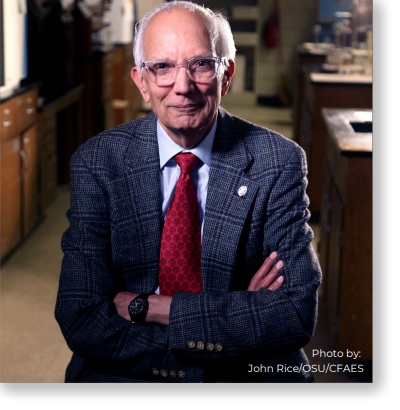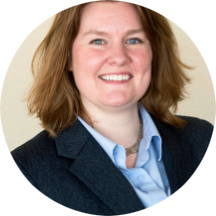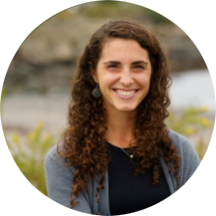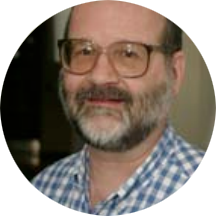Winter Conferences
No Events Found
SNEC 2022 Winter Conference
KEYNOTE SPEAKER: DR. RATTAN LAL
Dr. Lal is an entrepreneur, a distinguished university professor, and a globally renowned soil scientist. Currently, Lal is the Director of the CFAES Rattan Lal Center for Carbon Management and Sequestration at the Ohio State University. Dr. Lal received the Glinka World Soil Price in 2018, the World Food Prize in 2020, the Good Will Ambassador of IICA in 2020, and the Padma Shri Award in 2021. His research interests are in regenerative agriculture, soil carbon sequestration, soil restoration, natural resource management, and global food security. President Biden appointed Lal as a Member of the Board for International Food and Agricultural Development in January 2022.
The World Food Prize writes, “Dr. Rattan Lal, a native of India and a citizen of the United States, wil I receive the 2020 World Food Prize for developing and mainstreaming a soilcentric approach to increasing food production that restores and conserves natural resources and mitigates climate change. Over his career spanning more than five decades and four continents, Dr. Lal has promoted innovative soil-saving techniques benefiting the livelihoods of more than 500 million smallholder farmers, improving the food and nutritional security of more than two billion people, and saving hundreds of millions of hectares of natural tropical ecosystems.”

For future generations, it is very important that soil resources must be protected, preserved, restored, and enhanced. That is where the future of humanity lies.
Speaker Bios and Abstracts

Stacy Minihane
For future generations, it is very important that soil resources must be protected, preserved, restored, and enhanced. That is where the future of humanity lies.
Soil Carbon Sequestration in the Massachusetts Regulatory Framework

Hillary Sullivan
Hillary received her B.S. in Environmental Science from Clark University, and her M.S. in Biology also from Clark University. She has worked as a research assistant studying nitrogen cycling in salt marshes for the past seven years. In 2019, she started her PhD at Northeastern University studying the effects of hydrology on salt marsh biogeochemistry.
The impact of runelling as a hydrologic restoration strategy on salt marsh carbon decomposition

GILLIAN DAVIES AND KEITH ZALTZBERG-DREZDAHL
Gillian Davies is a Senior Ecologist and registered Soil Scientist (SSSSNE) at BSC Group, focusing on climate change and wetlands and working with local communities to develop Nature-based Solutions, particularly wetland, forest, and soil conservation and restoration.

Keith Zaltzberg-Drezdahl is an environmental designer and founding principal of the Regenerative Design Group. He works with clients to create resilient and productive landscapes that contribute to human well-being and social justice, regenerate ecological vitality, and create beauty.
Making it happen: Three case studies for increasing soil carbon storage and fighting climate change
The Earth’s soil contains about twice as much carbon as is contained in the atmosphere and biosphere together. How we conserve and manage soils has a b ig impact on carbon emissions and withdrawals from the atmosphere. Wetland soils are particularly significant, as wetlands store approximately 30% of the world’s soil carbon, despite occupying only 5 – 8% of the earth ‘s land surface. Most of the carbon stored in wetlands is stored in the soil. This presentation will discuss three projects where soil conservation, restoration, and management for soil health were central elements. In one case study, a specific approach to conserving and translocating hydric soils from a wetland impact area to a wetland replication area will be discussed. In another case study, state climate resilience funding was used to implement a regional assessment and planning project that identified and prioritized Nature-based solutions focused on conserving and restoring wetlands, floodplains, forests, and other ecosystems that harbor significant soil and biomass carbon.

Kaitlin Farbotnik And Joshua Beniston
Kaitlin Farbotnik is Kaitlin is the State Conservation Agronomist and Grazing Specialist for New Jersey NRCS. She has a B.S. in Agroecology with minors in Agricultural Entomology and Soil Science from the University of Wyoming. Kaitlin began her career with NRCS as a Conservation District intern writing HEL compliance plans in college.

Dr. Joshua Beniston is a Regional Soil Health Specialist for the Soil Health Division. Research and education in soil health have been Josh’s professional focus for the past 15 years. Josh earned an M.S. and Ph.D. in Soil Science at the Ohio State University. His research at Ohio State focused on soil carbon, soil health, and urban agriculture.
Improving soil health for urban agriculture by managing soil carbon
An abundance of vacant land exists in the formerly industrial cities of the U.S. Many communities have begun utilizing this land for functional greenspace and urban agriculture (UA) to improve the overall quality of life. This presentation will provide a summary of two projects that measured changes in soil carbon and health from management for UA. The first project focused on an experimental site located in vacant urban lots in Youngstown, OH where houses were recently demolished and removed and the soil was left in a degraded state. The experiment measured changes in soil properties and vegetable crop yields from applying organic amendments produced from urban green wastes. The second project was a field evaluation of soil health at nine urban market gardens in Ohio. Soil physical, chemical, and biological properties were measured and soil health was compared by calculating a soil quality index. These sites demonstrated h igh levels of both soil carbon and overall soil health. Observations from both projects indicate that management for UA can result in high quality soils. This presentation will a lso provide a short introduction to the NRCS Soil Health Division and our primary programs.

David Aiken
Professor Aiken joined the University of Nebraska Department of Agricultural Economics as a water and law specialist in 1975. A member of the Nebraska State Bar Association, Aiken has published over 100 technical and popular publications dealing with state water law, agricultural law, and more recently agricu ltural carbon credits.
Ag Carbon Credits
Ag carbon cred its may provide a modest income stream to ag producers. The principal buyers are corporations who want to buy cheaper ag carbon credits instead of actually reducing corporate greenhouse gas emissions. But the market is an emerging one and f inding the r ight carbon program is challenging. Pending federal legislation would provide significant carbon market clarity but prospects for enactment are 50-50. If the US significantly regulated US greenhouse gas emissions, carbon cred it prices would likely increase, including prices for ag carbon credits. Forestry provides most of the US land-based carbon sequestration, which ag carbon credits are based on. Current US cropland carbon sequestration equals about 0.3% of current emissions, while grasslands equals about 0.2%.

Meagan Eagle
Meagan Eagle is a Research Scientist in the Environmental Geochemistry group at the Woods Hole Coastal & Marine Science Center of the U.S. Geological Survey. Her research on coastal ecosystems, such as estuaries and wetlands, is used to build understanding and develop new tools to address adaptation of coastal wetlands to sea level rise. Dr. Eagle has a B.S. and M.S. in Geological and Environmental Sciences from Stanford University and a Ph.D. in Chemical Oceanography from the Massachusetts Institute of Technology/Woods Hole Oceanographic Institution Joint Program.
Impact of historic hydrologic manipulation and recent restoration on coastal wetland soil carbon
Over the past century, -50% of U.S. salt marshes have been lost to inf illing, impoundment, draining, or other land-use modification, with an estimated 0.48 million hectares of restricted and impounded wetlands and 0.24 mi llion hectares of drained former wetlands. Such modifications of t idal hydrology have negative impacts on coastal wetland carbon storage. Draining wetlands lowers the water level, exposing buried organic material to oxygen, resulting in loss of both stored carbon and associated e levation of the marsh. Additionally, impoundment commonly results in conversion of salt marsh habitat to another ecosystem that is disconnected from the natural feedbacks between sea-level rise and p latform elevation, leaving coastal wetlands with a reduced capacity to respond to future changes. Carbon storage is likewise negatively impacted when hydrology is altered. Here I will present carbon storage rates across the diverse ecosystems currently found in the impounded and drained former salt marshes of the Herring River estuary (Cape Cod Nat ional Seashore, MA, USA) as well as carbon sto rage data from Cape Cod marshes that have been hydrologically restored. Since diking over a century ago, freshwater ecosystems, including Phragmites Australis, Typha sps., and forest and shrub areas replaced former salt marsh habitat. Each of these ecosystems has unique carbon burial rates and thus projected elevation trajectories. Ultimately, drained and impounded former marshes in the Herring River system do not store carbon at rates (70-180 g C/m2/y) that match adjacent healthy salt marshes responding to sea-level rise (160-250 g C/m2/y) . Wetland systems, such as the Herring River, that continue to have altered hydrology are sites of reduced carbon storage compared to natura l analogues.

Emily Cole And Julie Fine
Dr. Emily Cole is the New England Regional Deputy Director at American Farmland Trust. Dr Cole directs the Climate and Agriculture Programming in the region which works to advance the adoption of smart solar siting, regenerative agriculture, and climate-smart management through on-the-ground technical assistance, financial assistance, farmer and service provider education, and policy outreach.

Julie Fine is the climate and agriculture specialist at AFT New England. She has experience in agricultural research, organic farming, and as an agricultural service provider. In 2018 Julie earned an MS in plant and soil science from the Stockbridge School of Agriculture at UMass Amherst researching the effects of winter-killed cover crops on nutrient cycling, weed suppression, and soil health.
Advancing Farmer Adoption of Regenerative Agriculture
Regenerative agriculture is key to improving the resiliency of New England’s farmland, protecting our environment, feeding our region – and combatting climate change. New England’s farmers are tasked with sustaining our local food system and supporting the agricultural economy, while facing increased expectations to meet local and market-based demands for sustainably produced food. Smaller and family farms f ind profitabi lity a continuous struggle and the adoption of regenerative practices can feel too burdensome or financially risky for farmers to transition from current practices. While there are pathways to overcoming these barriers and transition to regenerative agriculture, the responsibility cannot be shouldered by the farmer alone. American Farmland Trust has created regional programming that assists farmers (both technically and financially), using public and private funding, to provide the support necessary for farmers to move past the barriers to adopting regenerative agriculture practices. This presentation will share highlights and lessons learned from AFT’s work on advancing regenerative agriculture in New England.

Conservation NewsBriefs
-
Driest place on Earth witnesses flowers blooming for first time in decade
Source: Conservation News Briefs Published on 2024-07-25
-
Rethinking stormwater — from waste to treasure
Source: Conservation News Briefs Published on 2024-07-25
-
5 reasons to seed cover crops after specialty crops
Source: Conservation News Briefs Published on 2024-07-25
-
Smart soil can water and feed itself
Source: Conservation News Briefs Published on 2024-07-25
-
Program pays Illinois farmers to improve soil health
Source: Conservation News Briefs Published on 2024-07-25
- 2024 Winter Conference – Presentations
- 2023 Winter Conference – Water Quality in Southern New England: The Latest Research, Practice, and Policy
- 2022 Winter Conference – Soil Carbon Storage: Combating Climate Change from the Ground Up
- 2020 Winter Conference – Lights Up: Sustainable Solar in New England
- 2019 Winter Conference – Going With the Flow: Stream Continuity
- 2018 Winter Conference – Healthy Forests, Healthy Habitats
- 2017 Winter Conference – Resiliency Planning
- 2016 Winter Conference – Swamp Things

